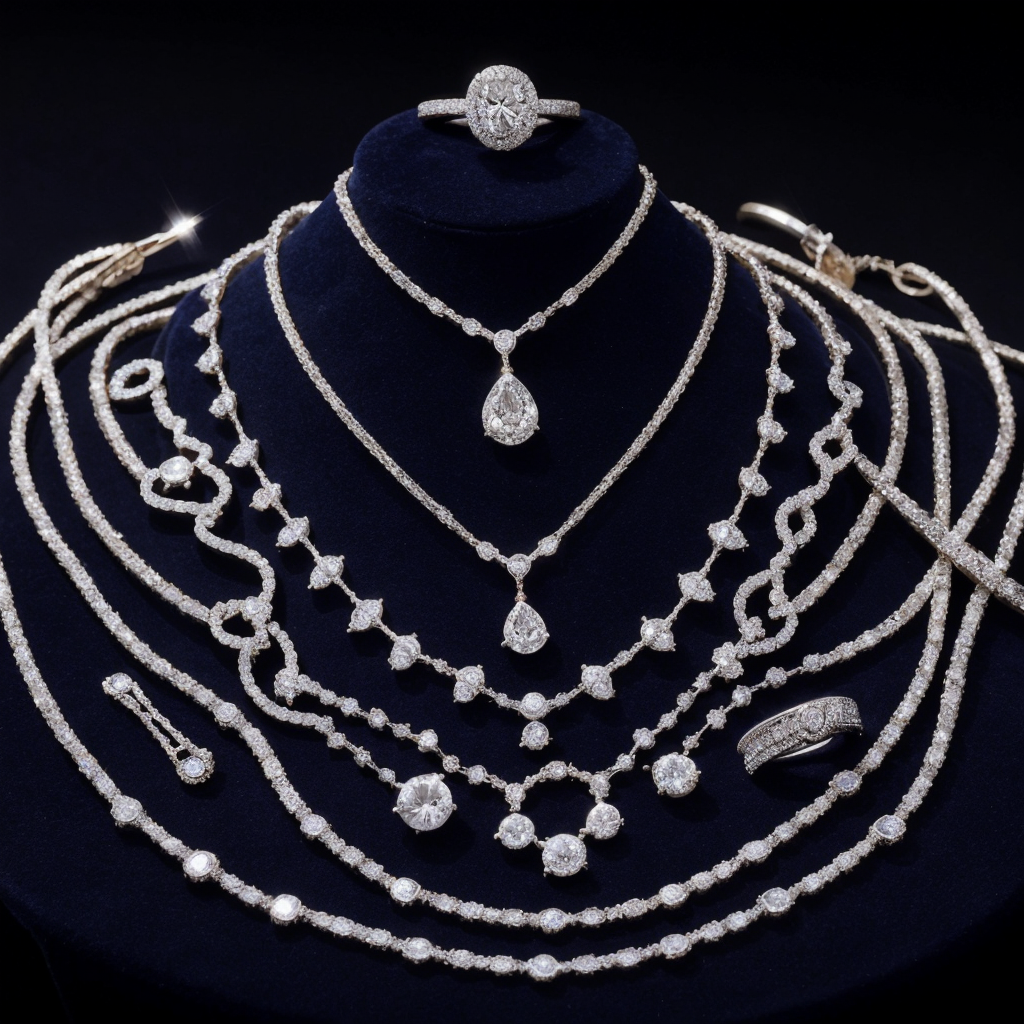The History and Significance of Diamond Jewelry
Diamonds have fascinated humanity for millennia, serving as powerful symbols of wealth, power, and love. The journey of diamond jewelry begins in ancient India, where diamonds were first mined and revered for their brilliance and invincibility. For centuries, India remained the sole source of diamonds, and these precious stones were traded along Silk Road routes, reaching far into the empires of the West and beyond.
In ancient civilizations, diamonds were not merely ornamental. They were believed to possess protective qualities, warding off evil and bringing good fortune. The Greeks and Romans thought diamonds were the tears of gods or splinters from falling stars. Such myths contributed to the mystique and allure surrounding these gems, enhancing their value and desirability.
The significance of diamond jewelry evolved substantially during the Middle Ages and the Renaissance. European nobility began to use diamonds as symbols of status and power. The diamond’s unmatched hardness and rarity made it an ideal emblem of durability and permanence. By the 15th century, diamonds had become a staple in royal regalia and aristocratic adornments.
A pivotal moment in the history of diamond jewelry occurred in the Victorian era, with the introduction of diamond engagement rings. This period saw a romanticization of diamonds, embedding them deeply within the cultural fabric as symbols of love and commitment. Queen Victoria’s own love for diamonds significantly influenced public perception, popularizing diamond jewelry among the masses.
The 20th century marked the global democratization of diamond jewelry, largely due to the efforts of De Beers. Their iconic marketing campaign, which coined the phrase “A diamond is forever,” revolutionized the diamond industry. This campaign not only cemented diamonds as the premier choice for engagement rings but also reinforced their image as timeless and eternal symbols of love.
Across different cultures, diamonds have maintained their symbolic meanings while adapting to contemporary tastes and trends. In modern times, diamond jewelry continues to be a cherished tradition, representing a blend of historical significance and personal expression. Whether as tokens of affection or statements of elegance, diamonds remain an enduring testament to human fascination with the extraordinary.
Types of Diamond Jewelry and How to Choose the Perfect Piece
Diamond jewelry comes in a myriad of forms, each offering a unique blend of elegance and sophistication. The most common types of diamond jewelry include rings, necklaces, earrings, and bracelets. Each type can be further distinguished by various cuts, settings, and styles, which contribute to their individuality and allure.
When it comes to diamond rings, popular choices are solitaire, halo, and three-stone settings. Solitaires focus on a single diamond, highlighting its brilliance, while halo settings encircle a central diamond with smaller stones, amplifying its sparkle. Three-stone rings symbolize the past, present, and future, making them a meaningful choice for many. Diamond necklaces vary from simple pendants to intricate chokers, each designed to enhance the neckline. Diamond earrings, including studs, hoops, and dangles, offer versatile styling options suitable for both casual and formal occasions. Diamond bracelets, such as tennis bracelets and bangles, provide a touch of elegance to the wrist.
Choosing the perfect piece of diamond jewelry involves understanding the 4 Cs: cut, color, clarity, and carat. The cut influences the diamond’s sparkle, with ideal cuts maximizing brilliance. Color refers to the diamond’s hue, with the most valuable diamonds being colorless. Clarity denotes the presence of inclusions or blemishes, with higher clarity diamonds being more sought after. Carat weight reflects the size of the diamond, with larger diamonds commanding higher prices.
Personal style and the occasion also play significant roles in selecting diamond jewelry. For everyday wear, understated pieces like diamond studs or simple pendants are ideal. For special occasions, more elaborate designs such as chandelier earrings or statement necklaces might be more appropriate. Budget considerations are crucial, as diamonds come in a wide range of prices. A balance between quality and affordability can be achieved by prioritizing certain Cs over others based on personal preferences.
Assessing the quality of diamonds is essential, and understanding certification from reputable organizations like the GIA (Gemological Institute of America) can provide assurance of a diamond’s authenticity and quality. Shopping from reputable jewelers guarantees not only the quality of the diamonds but also the craftsmanship of the jewelry pieces. Armed with this knowledge, readers can make informed decisions when purchasing diamond jewelry, ensuring their chosen piece will be cherished for years to come.

No responses yet